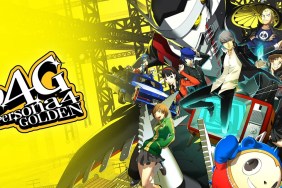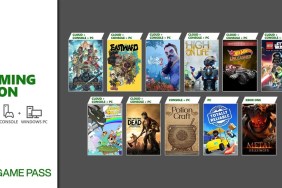Who needs a portal when you have whole dimensions?
At a Square-Enix after-party at GDC, I got to play a demo for Quantum Conundrum, on both the Xbox 360 and PS3. The touch of Portal designer Kim Swift's guiding hands on the game can be felt everywhere in the design. Even though the mechanic it uses is completely different, it has the same feel to its puzzles, which often can be resolved with a moment of head-slapping realization that the problem was much easier than you thought. Your unseen guide, Professor Fitz Quadwrangle, isn't an ascerbic AI, but his seemingly random pronouncements and Mr. Magoo-like delivery carry just as much absurd sarcasm as anything from GLaDOS. But most importantly, this first-person puzzle game is really fun.
Quantum Conundrum's basic conceit is that it allows you to get through puzzles by changing the material properties of the world around you with your trusty Inter-Dimensional Shift (I.D.S.) Device. At first this is just picking up and moving heavy safes in the Fluffy Dimension, which renders the world as if it were made of nearly weightless cutely decorated couch cushions of cuddliness. Soon you receive access to the Heavy Dimension, where everything is transformed into heavy bolted metal objects.
After that, the puzzles involve switching the properties between Fluffy, Normal, and Heavy dimensions at strategic times; for instance, in order to get past a laser you may have to throw a Fluffy chair at a laser beam, and then shift to Heavy mode so that the now metal chair blocks the beam without being destroyed. The bottom of the screen shows the control scheme for dimension shifting, revealing that there are four different dimensional modes, though only three were shown.
In the demo, the player isn't allowed to control shifting into the third dimension revealed, the Slow Motion Dimension. Instead, the Slow Motion Dimension was controlled by a "Drinking Bird" (which the Professor "invented" to press buttons) that turned it on and off at regular intervals. This platforming section involved a lot of jumping onto and off of furniture fired out of canons. Just getting to write that sentence made my day.
The game looks great. It has a cartoony aesthetic, which feels kind of like a combination of Portal and Dexter's Lab. It takes place in the Professor's house, which is filled with giant machines with glass tubes coming out of them filled with bright, yellow liquids, cannons that look like mechanical faces, and safes that belong in a Looney Tunes cartoon. Even with its cartoony aesthetic, it still has a great deal of detail. Pull the books off Professor Quadwrangle's shelves, and you'll find their titles are all scientific portmanteaus on famous literary novels: Mansfield Pulsar, The Quark of Monte Cristo, Through the Looking Spectrometer, To Killowatt A Mockingbird, Prime and Probability.

One surprising thing about the game is in the way that it rewards experimentation. In an early level I watched another player [He means me. ~Ed. Nick Tan] decide to pile every object in the room on a switch—instead of using a Heavy Dimmension Shift to make a cardboard box heavy enough to push it down—and it worked. Now it took much longer than solving the puzzle as directed, but the developers were smart enough to give each object in the room a specific weight, and have the switch be weight-activated, rather than based on a scripted event. This gives you a refreshing degree of freedom. Of course, if you try to run into a laser and die, you will still get one of the game's randomly selected, hilarious death screens (they're numbered, and they sarcastically tell you something you'll never be able to do or know now that you're dead).
The most challenging part of the game was the platforming section at the end of the demo. Like Mario, the player has no forward inertia when jumping off a moving object. This meant that while riding a very quickly moving sofa through the air, I jumped too early to get to a ledge since I thought the momentum would carry me there and I fell instead into one of the bottomless pits the Professor thoughtfully installed in his house. It's not a dealbreaker—after all, no one complains about this in Mario games—but it took some getting used to.

One problem this game shares with Portal is that once a puzzle is complete, there's no mystery to the solution anymore. A glance at the How-To-Play menu revealed how Quantum Conundrum planned to get more replay value once players had completed the game. Like Portal's challenge to see how few portals one could use, the game features two similar challenges, Goal Time and Shift Goal. Goal Time challenges the player to get through the challenges in the fastest amount of time, and Shift Goal with the fewest dimensional shifts (where piling all those books may come in handy).
I'm still amazed at just how much Quantum Conundrum feels like Portal. It's not just the gameplay or the general character of the game, but maybe even more powerfully, its rhythms. In the puzzles, everything seems to happen, or needs to happen, within certain beats. When that rhythm comes together for the player, and they seem to hit each objective right on the beat, it creates an exhilarating experience. I'm sold.











